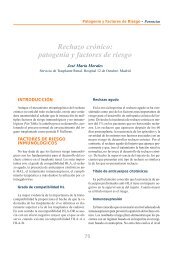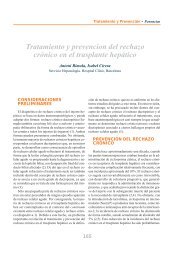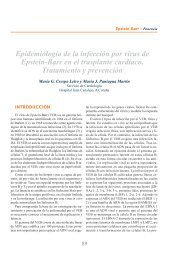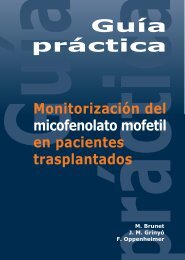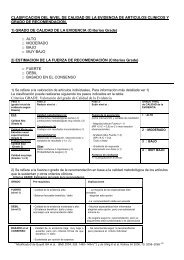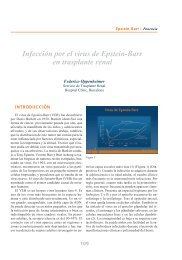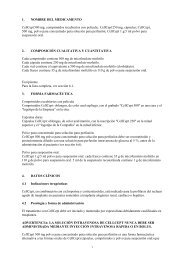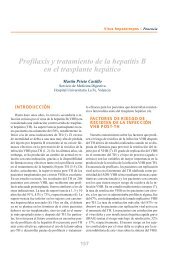Untitled - Roche Trasplantes
Untitled - Roche Trasplantes
Untitled - Roche Trasplantes
You also want an ePaper? Increase the reach of your titles
YUMPU automatically turns print PDFs into web optimized ePapers that Google loves.
PROTOCOL BIOPSIES AND THE DIAGNOSIS OF HUMORAL REJECTION<br />
Figure 2. Acute glomerulitis in humoral rejection. Numerous inflammatory<br />
cells, mainly macrophages can be found in glomerular capillaries.<br />
Based on results from the above mentioned multicenter study we apply the following<br />
cut-offs for C4d in our center: 50% of ptc<br />
with specific C4d stain = diffuse C4d positive. Focal as well a diffuse C4d detection in<br />
ptc correlated significantly with the pathological features of AHR. However, the proof that<br />
a focal Cd4 detection is also significantly related to the presence of donor-specific antibodies<br />
in the patient’s serum is currently lacking but was shown for diffusely positive<br />
biopsies in several studies.<br />
In summary, every pathological report should comprise the result of a C4d stain and describe<br />
any morphological features potentially being part of the spectrum of humoral allograft<br />
injury. In the bottom line or at least in the commentary of the report it should be<br />
stated whether both, C4d detection and AHR pathology are present and with this biopsy<br />
an episode of acute humoral rejection is diagnosed. If just one of the two features is<br />
present (C4d or pathology) the biopsy has to be considered as being “suspicious for”<br />
acute humoral rejection. In any case, C4d detection should always lead to the analysis of<br />
55




